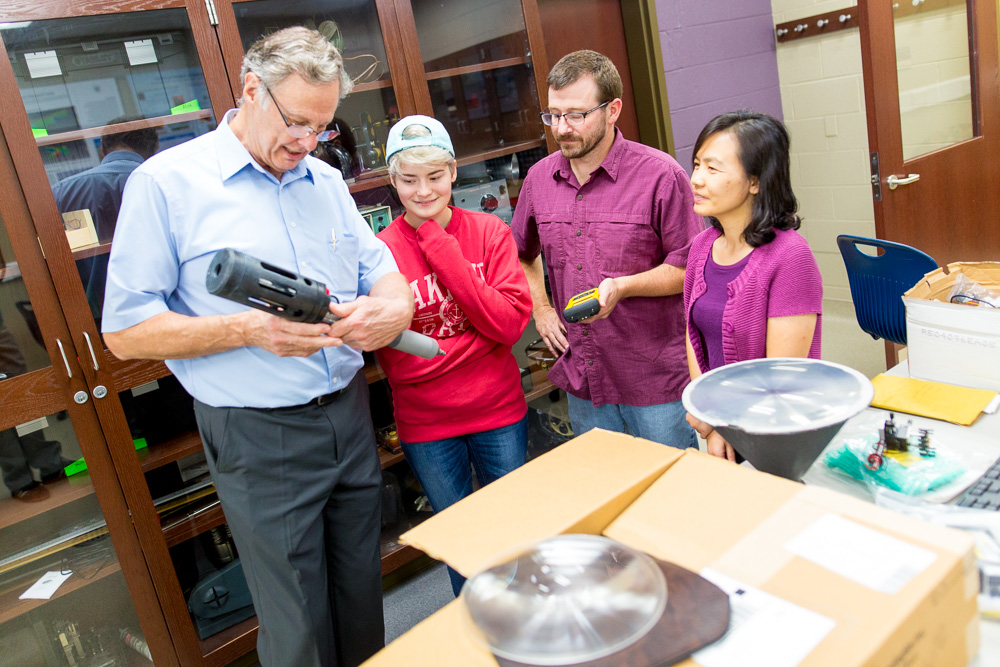Russell De Young, a senior scientist at NASA’s Langley Research Center, returns to Eastern Mennonite University (EMU) Wednesday, Jan. 25, to present the first Suter Science Seminar of the spring 2017 semester. The lecture begins at 4 p.m. in Suter Science Center, Room 106.
His presentation will highlight some of the exciting discoveries NASA and other nations have recently made in understanding the unique characteristics of the individual planets as well as the search for life beyond our own planet.
De Young visited campus in the fall to donate equipment and mark the signing of a Space Act Agreement between EMU and NASA. The arrangement is authorized by a federal law that allows NASA to collaborate with universities and private companies on mutually beneficial research.
Under the terms of the three-year agreement with EMU, NASA scientists will periodically visit campus for lectures and seminars; work with engineering, biology and chemistry faculty on course and curriculum review; and collaborate with EMU faculty and students on research programs.
The agreement was an exciting development for EMU’s new engineering program, said professor Esther Tian. Tian and her students toured robotics, aeronautics, remote sensing and materials laboratories at NASA’s Langley Research Center in Hampton, Virginia, in late October.
De Young is a senior research scientist in the Science Directorate of NASA Langley Research Center. He is currently involved with research on lasers to determine the atmospheric profile of ozone to better understand atmospheric air quality. He also studies the future impacts of climate change on NASA Langley Research Center.
De Young earned a bachelor’s and master’s in electrical engineering from the University of Florida in 1970 and a PhD in nuclear engineering from the University of Illinois, Champaign-Urbana, 1975, where he studied the use of pulsed nuclear reactors as a pumping source for gas lasers. He has published over 95 papers in scientific journals, has presented research results at numerous conferences, has graduated 15 graduate students and has obtained five U.S. patents.
